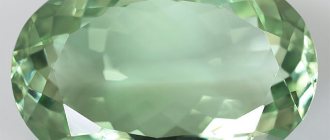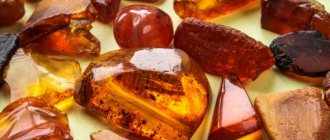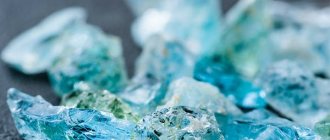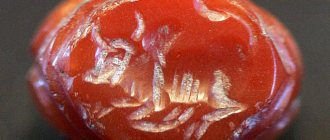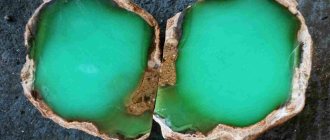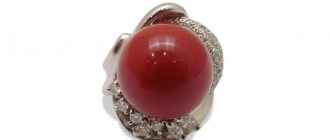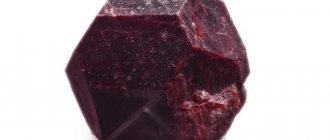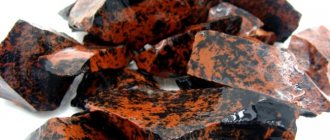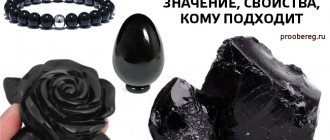The color of amber fascinated people thousands of years ago; “honey drops” served as talismans and amulets. Frozen gold or sunstone, but what is amber? This mineral is of organic origin, being a product of tree resin. Wide distribution throughout the planet makes it possible for everyone to purchase an amazing stone. But there are rare species that are truly lucky to find in nature.
Physical and chemical properties
Amber is a hardened fossil resin. The result was a stone that was not too hard and brittle. The form of birth is not crystals, like many gems, since it is an amorphous framework polymer.
The chemical composition of pure amber is:
- Carbon – 79%.
- Hydrogen – about 11%.
- Oxygen – about 9%.
The presence of various impurities determines the color. There is no pleochroism, no birefringence and no dispersion, but luminescence is present. When rubbed, it becomes electrified, thereby receiving a negative charge. Amber is very flammable, as it ignites even from a burning match. When exposed to open air, it oxidizes (“agees”), changing color and chemical composition, while becoming more fragile.
| Formula | C10H16O+(H2S) |
| Color | Over 300 shades, the main ones are yellow, golden, cognac, orange, orange-red, milky white, cloudy colorless, green, brown and black. There is no pleochroism. |
| Probable impurities | Many different ones, such as silicon, aluminum, calcium, iron and others. |
| Shine | More often resin and glass, less often matte and greasy |
| Hardness | 2-2,5 |
| Transparency | Any – from completely transparent to completely opaque |
| Cleavage | Absent |
| Strength | Fragile |
| Kink | More often conchoidal, less often viscous (brittle when aging) |
| Density | More often 1.05-1.09, less often up to 1.3 g/cm3 |
| Specific gravity | 1,0-1,1 |
| Melting temperature | Depending on the type 520-550 degrees, when heated to 1000 degrees it evaporates |
| Solubility | Insoluble in water (softens in boiling water), partially soluble in alcohol, ether, chloroform and linseed oil, completely decomposed by hot concentrated nitric acid. |
| singonia | Absent |
| Refractive index | 1,539-1,545 |
| Birefringence and dispersion | Not observed |
| Luminescence | Present – from white-blue to yellow-green |
Best choice by name
The amber mineral is a stone that is favorable to everyone, but it will be an ideal option for people with the following names.
Women's
- Taisiya - will improve health and develop intuition.
- Anna - as a talisman, will give good health and bring good luck.
- Claudia - will reveal the owner’s talents, fill her with optimism, and help her choose the right people, both friends and soul mate.
Men's
- Robert - will protect you from negativity, give you endless vitality, and bring success.
- Edward - just like for Claudia, the amber talisman will become an assistant in choosing people, will make you kinder, and improve your health.
Colors and varieties
When dividing amber into types, factors such as the degree of fragility (determined by a microhardness tester) and the degree of transparency are taken into account. The second indicator determines the presence of such varieties as:
- Transparent amber (highest quality and highest price).
- Cloudy or translucent amber.
- Bastard is opaque amber.
- Bone is an opaque amber, visually similar to ivory.
- Foamy – also opaque, but visually reminiscent of sea foam.
The presence of impurities in the form of foreign inclusions and minerals determines the color of amber. Interestingly, there are about 400 shades of stone in total.
The main color varieties of the solar gem are as follows:
- White is actually yellow, but only appears white because of the numerous bubbles. It bears the proud name “royal amber”.
- Milky beige or ivory.
- Light yellow, yellow or golden.
- Yellow-brown is the most common color, which in turn gave rise to the concept of “amber color”.
- Cognac, brown or brown - most often it is aged yellow-brown amber.
- Orange-red or yellow-red.
- Red or cherry – very rare and expensive, called “Dragon's Blood”.
- Greenish - the tint is obtained due to admixtures of sulfur pyrites or inclusions of algae.
- Almost colorless.
- Blue - also called Dominican amber after the place of extraction.
- Black – also called jet.
There are amber samples that have unique inclusions from plants or insects - inclusives. They are very rare and therefore very expensive.
The mineralogical classification of amber includes the following types:
- Succinite is the most common and high-quality, in demand in jewelry, dark brown with a bright yellow center.
- Kiscelite is translucent yellow, olive or green.
- Bukkerite is opaque, caramel-red.
- Gedanite is very fragile and inaccessible for processing, opaque, yellow.
- Glessite is brownish-brown, practically free of impurities, opaque.
- Stanthienite is black-brown, opaque, brittle.
- Schraufite is dark yellow-red or red.
- Cratzite is unripe amber.
This is interesting!
There are also varieties such as “rotten” amber, an intermediate form between succinite and gedanite, and “naked” amber, a dense stone polished by sea sand.
The price of a stone and what it depends on
The pricing of amber is influenced by factors such as:
- Weight;
- Age of the stone;
- The presence of foreign inclusions in the texture and their nature;
- The shape of the nugget - the smoother the relief at the surface, the more expensive the stone;
- Field;
- Variety.
The price for 1 gram of unprocessed amber ranges from 100-200 Russian rubles.
The most expensive and rare type of gem is blue amber, which is mined in the Dominican Republic.
Where and how is amber mined?
The history of the birth of amber in nature is amazing. Its origins go back to the distant past of the planet, when “there was no smell of people on it yet.” Approximately 100-30 million years ago (Upper Cretaceous and Paleogene periods) there were pine trees everywhere. Suddenly the climate on the planet changed - it became very hot. As a result, resin began to actively flow out of the pines, which subsequently hardened and after a while turned into a beautiful sunstone, mined everywhere today.
The largest deposit is located in Russia - the Kaliningrad region. 90% of the world's amber production is mined there and processed right there at a special Amber Plant.
There are also amber deposits in many countries (Ukraine, USA and others). Depending on the place of extraction, the following varieties of solar gem are distinguished: Baltic, Rivne, Burmese, Dominican and Mexican.
Amber is mined in different ways. For example, they simply collect its samples washed ashore by the seas and oceans. Or a powerful jet of water washes away the amber-bearing soil in quarries, exposing pieces of the gem.
Interesting facts about amber
The crown of the Egyptian pharaoh Tutankhamun was crowned with a large Baltic amber stone.
During the Soviet era, the largest varieties of amber, with interesting colors, and rare varieties were mined. That is why the price of amber necklaces and bracelets made in the mid- and late 20th century today can cost several hundred thousand rubles!
Amber is light, sunny and warm, a truly kind helper for humans. Jewelry made from this mineral will be a wonderful companion for any person who strives for well-being, love and success. The ancient energy of a golden nugget will definitely bring only good things to its owner!
Magical properties of amber
Amber is a symbol of the sun, joy, happiness and fun. Its main magical effect is expressed in filling its owner with vitality, inner light and warmth. The stone also has the following magical abilities:
- Serves as a talisman for people and their homes from any shocks and negativity.
- Completely neutralizes black magic.
- Heals the human soul from melancholy, worries and disappointments.
- Gives a great mood and teaches optimism.
- Strengthens intuition and helps solve complex problems.
- Makes the owner calmer, relieves irritability, outbursts of anger and aggression.
- Helps you find your way in the darkness, both literally and figuratively.
- It patronizes children, including the unborn, so it is recommended for all future and existing mothers to have jewelry with amber.
- Returns youth to body and soul.
- Brings love and passion back into fading relationships.
Libra and Aquarius
Libras are characterized by frequently changing moods; it is very difficult for them to find a point of balance, so in amber they can find a good mood for themselves and self-confidence. Massive jewelry will not suit them; it is better to use delicate work that will look neat on the body.
But for Aquarius, amber will help them become more squat, which will not harm them at all, because by their nature they are accustomed to living in dreams and rarely want to return from them. From the mineral they will also receive perseverance, fearlessness and organization.
The healing properties of amber
Modern lithotherapists admit that there is not a single disease that is not subject to the healing power of amber. It completely cures some, relieves others, reducing pain and other symptoms, enhancing the effect of traditional treatment:
- The solar gem improves the functioning of all organs, especially the brain.
- It speeds up metabolism and dulls the feeling of hunger, so it can be used to lose excess weight.
- The stone easily copes with thyroid pathologies.
- It is indispensable for people with a weak respiratory system, as well as those prone to colds. Brooches, beads and necklaces made of amber protect a person from viruses, cure colds, ease breathing and help cough.
- Green varieties improve hearing and restore visual acuity.
- Amber is an indispensable assistant in the treatment of the cardiovascular, nervous and digestive systems.
- The solar gem cleanses and tightens the skin, improves complexion, restores youth and beauty.
Wearing amber will also be beneficial for healthy people. They will forget about fatigue. They will always feel strong, energetic and cheerful.
Amber in lithotherapy
The healing properties of the gem are due to its ability to accumulate static electricity. Even ancient oriental healers noticed that migraines and headaches of various types go away if you rub your temples with amber plates. It was believed that a sunstone pendant could even relieve heartache if worn under clothing. Weak discharges that occur when the stone rubs against clothing and skin are quite capable of influencing nerve endings, relieving various types of pain.
But the most valuable active ingredient is the organic acid that is part of amber. Its compounds enhance gas exchange in tissues and cells, serve as a biostimulating substance, activating restoration processes. White amber is especially rich in acid. An infusion of ordinary water on pieces of mineral has beneficial properties: it can have a beneficial effect on aging and sagging skin.
The magic of amber is never dark. This is a mineral that protects the owner from all energy-informational attacks, the evil eye and damage. It is only important to know who is suitable for an amber stone of certain shades, and to be able to choose a real gem.
Talismans and amulets
Amber is an amazing stone because its positive influence covers all aspects of a person’s life:
- If you carry it with you, it will serve as a talisman against any troubles and ill-wishers.
- If you keep it in the house, it will protect the home itself from accidents (fires, robberies, etc.), and its residents (from illnesses, evil eyes, damage, and so on), and will also create an atmosphere of happiness and comfort in the family.
- Amber attracts good luck in business, so it is recommended for working people to have it.
- It provides good yield (if special rituals are carried out), so it can be used in agriculture.
- It fills with energy and develops creative abilities, which means it is needed by people of creative professions.
- It has a beneficial effect on children, making them calmer, healthier and more cheerful.
As for names, amber doesn’t make anyone stand out. There are restrictions regarding representatives of certain zodiac signs, but this is described below.
Which zodiac sign is amber suitable for?
Magic crystal is not precious or semi-precious, but the price of some jewelry can be high. When choosing jewelry, you need to take into account the horoscope prediction and astrological characteristics. Not all zodiac signs will benefit from the properties of a solar crystal. It is not recommended for Taurus to wear it all the time; you can wear the jewelry sometimes, nothing bad will happen. The ruling planet is the sun, then the amber stone suits the zodiac sign Leo. The mineral will be able to reveal character traits, give confidence and strength.
An amber ring affects Manipura - the solar plexus chakra.
The division of the magical properties of amber according to zodiac signs can be considered conditional.
Amber products and jewelry
The jewelry market is filled with amber products. It can be any jewelry - beads, earrings, rings, bracelets, pendants, brooches. Or equally valuable practical items - cigarette cases, boxes, watches, caskets, candlesticks, ashtrays and much more.
In jewelry, amber can be the only stone or combined with other gems. Both cupronickel silver (jewelry) and precious metals are used as frames. The type of frame determines the basic cost of the product:
- A small silver brooch with amber can be purchased for $30, a bracelet for $70, a ring for $50, and a pendant for $15.
- Gold earrings with amber cost 120-500 dollars, rings – 100-250, and pendants – 70-230 dollars.
- Jewelry made of cupronickel with amber will cost much less, about 5-100 dollars.
This is interesting!
In addition to jewelry, amber is also in demand in other areas:
- Succinic acid is used in the pharmaceutical and perfume industries.
- The surfaces of insulators are coated with amber varnish to improve their properties; it is used to create sandpaper. It is used to protect wooden surfaces - furniture, ship bottoms, musical instruments and others.
The violins of the great virtuosos Stradivari and Amati were treated with amber varnish, which contributed to the preservation of their melodiousness to this day.
- In medicine, the property of amber to prevent blood clotting and the destruction of red blood cells is valued. Therefore, a variety of medical paraphernalia intended for blood transfusions are made from it.
- The sphere of art did not pass by either. All kinds of masterpieces are made from it - figurines, souvenirs and much more. Among stone lovers, amber paintings and icons are especially valued.
The Amber Room, decorated and furnished mainly with amber products, is known all over the world. This magnificence was created specifically for the Prussian monarch Frederick I by brilliant German craftsmen. Then the room was donated to Peter I, and during the Second World War it mysteriously disappeared without a trace.
What else are amber beads useful for?
Despite the fact that the properties of amber have not been fully studied, “tears of the sea” have found wide application in our lives. Even very skeptical people do not neglect amber jewelry, and some even use amber chips.
The smallest fraction of crushed amber is dissolved in drinks and taken with food, worn in linen bags near the body and placed near computers at work places. This is truly a unique natural biostimulant and source of pure vital energy. And this is claimed not only by ardent fans of lithotherapy!
Silver necklace in amber from the “AMBER” collection in the SUNLIGHT catalog
Amber beads for babies have also gained wide popularity - they are often given to babies even before their first teeth appear. It is believed that when in contact with amber, babies tolerate pain better, experience teething easily, sleep more peacefully and develop better. And if you sometimes let them chew on the first piece of jewelry in their life, their teeth will grow stronger and healthier. And the saturation of the developing organism with natural biologically active substances cannot be discounted.
Children's amber beads are radically different from adult jewelry. They are made using perfectly smooth beads on a thread interspersed with knots and a reliable hidden clasp. The baby cannot remove or tear the useful decoration on his own.
How to distinguish an original from a fake
Although amber is classified as an ornamental stone, some varieties are highly valued by jewelers, and gems with inclusions of animals or vegetation are often equated in price to precious gems. Therefore, the stone is actively counterfeited, for which various resins are used (kauri, copal, burmite, rumenite, simetite, sandarak, mastic, rosin, incense, mira, dammar, urea, epoxy, acrylic and others), substances containing amber resin, such as amber varnish, as well as glass, celluloid, polystyrene and so on.
The jewelry market is also rich in pressed amber. Such gems cannot be considered fake, since they are made from completely natural material, but their price is still much lower.
You can distinguish an imitation from a natural gem by the following characteristics:
- Original amber, exposed to ultraviolet rays, begins to glow. This property is called luminescence.
- A stone born by nature, when in human hands, actively gives off accumulated heat.
- Natural amber does not sink in salt water, but if you lower it to the bottom, it floats.
- When heated, amber will begin to exude a pleasant pine aroma, the imitation will smell of chemicals.
- The original solar gem is electrostatic. If you rub it, it will begin to attract threads and small pieces of paper.
If you still have any doubts, then it is best to show the stone to an experienced jeweler.
Who is it suitable for?
Now let’s summarize who the amber stone is suitable for with its properties:
- A soft but strong protection against negativity is needed.
- Who works a lot with his head, as it allows him to look at the problem outside the box.
- Fast recovery after illness.
- In the fight against depression, anxiety and similar conditions.
- Helper for children of any age.
- Pupils and students for better learning.
- For older people to prolong their longevity.
- Women who want to cope with frigidity and/or conceive a baby.
- For men struggling with impotence.
- Attracting wealth of any form.
- Searching for or improving an existing relationship with a significant other by calming emotions, getting rid of jealousy and mistrust.
The list of whom amber is suitable for its magical and healing properties can be continued for a very long time, so above we have given only the most basic points.
You can find out who amber is suitable for according to your horoscope in a separate detailed article.
How to care for stone
Amber is a whimsical stone. It requires especially careful care:
- It is necessary to protect the stone from any, even minor, mechanical influences. Wear carefully, avoiding bumps and falls. Store in a separate box with hard walls, lined with soft fabric. Protect from contact with other stones and especially metal.
- It is impossible to allow the solar gem to be influenced equally by both high and low temperatures, as well as their differences. Therefore, during hot or frosty seasons, you should not wear jewelry with it, and you should also remove it when visiting a bathhouse or sauna.
- Although amber is a sunny pebble, it is still afraid of exposure to direct sunlight for a long time. Sometimes you should lay it out to bask in the sun for 10-15 minutes. In this case, it will become brighter, and will also be cleansed of negativity and replenish its energy reserves.
- The stone can become cloudy and crack from exposure to chemicals, so it must be removed when cleaning, applying cosmetics and perfumes.
- Amber can swell from prolonged exposure to a humid environment - this should also be avoided. However, being in a dry climate for a long time, it can also dry out, so every few months the stone needs to be “watered” - kept in clean water for 10-15 minutes.
- You can only touch the sun gem with clean hands, as dirt and grease leave stains on it.
Cleaning amber should be done very gently. To do this, use a special solution or salted water, in which the pebble is soaked for 20 minutes, and then thoroughly washed and wiped with a soft cloth.
If the amber is cracked, then all that remains is to go to the jeweler, and if it becomes cloudy, then you can restore its shine yourself. To do this, prepare a homogeneous mixture from paraffin and tooth powder (no paste!). It should be applied in small quantities onto a flannel cloth and carefully polish the pebble. You can’t press, rub, or squeeze. Remove the remaining mixture and wipe the amber with a napkin - the original shine will return to the stone.
White-flammable stone Amber is a source of vitality
“Shards of sun rays”, “sea tears” - whatever people called this stone! The gentle warm glow of the gem warms the soul, reveals creativity, and helps you see the world in bright colors always, no matter how difficult the period of life may seem. A powerful natural amulet is perfect for athletes and artists, doctors and teachers. For such people, the stone will become a real support and a source of “second wind”, since they constantly interact with others, spending a large amount of emotional and physical strength. Amber, a flammable stone, was known in Rus' as “alatyr”, and it was it that was considered the stone of life itself, its source and spiritual uplift.
Place of Birth
The most ancient deposits known to modern historians were located in Jutland (modern Denmark) and in the Frisian Islands off the coast of the Netherlands. There was even a road built there from the Roman Empire, called the Amber Road. It is believed that gems were mined in India, North Africa, near the ancient Peruvian city of Moray, but there is no reliable information about this. Modern deposits are located in temperate climate zones and subtropics.
There are several deposits in Europe:
- Baltic-Dnieper (Baltic coast, Rivne, part of Volyn, Zhytomyr and part of Kyiv regions)
- Carpathian (Eastern Romania and Western Ukraine)
- North Siberian
- Sicilian
In Asia:
- Burmese
- Far Eastern
In America:
- North American
- Caribbean (Dominican)
- Mexican
- Brazilian
In Russia, it is mined in the Kaliningrad region, near Lake Baikal, in the Far East and Siberia. Among European countries, the leading countries in the production of this mineral are Poland, Lithuania and Ukraine, partly Germany, the Netherlands and Denmark.
Characteristics of the stone
The name of the stone Amber is of Lithuanian origin. In other languages it was called differently. In French it is "Ambre", derived from the Arabic "anbar". In German it is “berstein”, which means “flammable stone”. The name passed into the Polish, Ukrainian and Belarusian languages, sounds like “burshtyn”. The ancient Greeks called the gem “electron”.
Amber is a mineral without a crystalline structure, classified as a natural resin. It consists of organic acids, oils, interspersed with sulfur, nitrogen, silicon, iron, aluminum and other chemical elements. The stone contains about 8% succinic acid, which is extracted and used industrially.
Description of the properties of natural amber and its physical characteristics:
- Color. The stone has a wide range of colors, there are more than 300 shades, most of them are in the yellow-brown spectrum.
- Hardness – 3-4 points on the Mohs scale.
- Density - 0.97 - 1.11 g/cmᶾ
- Transparency can be full, medium, there are opaque samples.
- There are no lines or cleavages.
- The fracture is conchoidal, viscous.
- Waxy shine.
- The structure is amorphous, in the form of a complex polymer.
- The absorption spectrum is not interpreted
- Luminescence ranges from blue and white to yellow and green.
An important property of the material is its ability to burn; it ignites even from a match. Amber powder is used in aromatic mixtures and in church censers. It was this stone that was first discovered to have the ability to become electrified. The words “electron” and “electricity” come precisely from the Greek name for amber.


